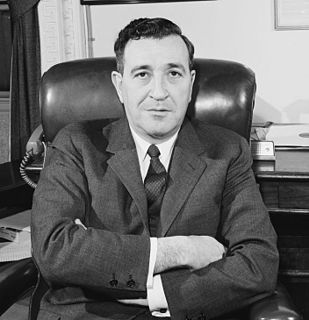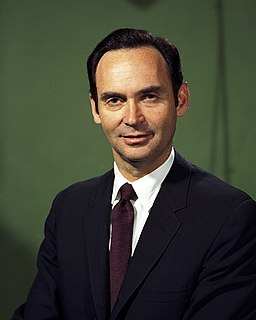
The National Advisory Committee for Aeronautics (NACA) was a United States federal agency founded on March 3, 1915, to undertake, promote, and institutionalize aeronautical research. On October 1, 1958, the agency was dissolved and its assets and personnel were transferred to the newly created National Aeronautics and Space Administration (NASA). NACA is an initialism, i.e., pronounced as individual letters, rather than as a whole word.

The American Historical Association (AHA) is the oldest professional association of historians in the United States and the largest such organization in the world. Founded in 1884, the AHA provides leadership for the discipline by protecting academic freedom, developing professional standards, supporting scholarship and innovative teaching, and helping to sustain and enhance the work of historians. It publishes The American Historical Review four times a year, with scholarly articles and book reviews. The AHA is the major organization for historians working in the United States, while the Organization of American Historians is the major organization for historians who study and teach about the United States.

The Mercury Seven were the group of seven astronauts selected to fly spacecraft for Project Mercury. They are also referred to as the Original Seven and Astronaut Group 1. Their names were publicly announced by NASA on April 9, 1959. These seven original American astronauts were Scott Carpenter, Gordon Cooper, John Glenn, Gus Grissom, Wally Schirra, Alan Shepard, and Deke Slayton. The Mercury Seven created a new profession in the United States, and established the image of the American astronaut for decades to come.
The Society of American Archivists is the oldest and largest archivist association in North America, serving the educational and informational needs of more than 5,000 individual archivist and institutional members. Established in 1936, the organization serves upwards of 6,200 individual and member institutions.

The Goddard Institute for Space Studies (GISS) is a laboratory in the Earth Sciences Division of NASA's Goddard Space Flight Center affiliated with the Columbia University Earth Institute. The institute is located at Columbia University in New York City.

The 89th United States Congress was a meeting of the legislative branch of the United States federal government, composed of the United States Senate and the United States House of Representatives. It met in Washington, DC from January 3, 1965, to January 3, 1967, during the second and third years of Lyndon B. Johnson's presidency. The apportionment of seats in the House of Representatives was based on the Eighteenth Census of the United States in 1960.

Jerome Bert Wiesner was a professor of electrical engineering, chosen by President John F. Kennedy as chairman of his Science Advisory Committee (PSAC). Educated at the University of Michigan, he was associate director of the university's radio broadcasting service and provided electronic and acoustical assistance to the National Music Camp at Interlochen, Michigan. During World War II, he worked on microwave radar development at the MIT Radiation Laboratory. He worked briefly after the war at the Los Alamos National Laboratory, then returned to MIT's Research Laboratory of Electronics from 1946 to 1961. After serving as Kennedy's science advisor, he returned to MIT, becoming its president from 1971 to 1980. He died at his home of heart failure.

The NASA Exceptional Service Medal is an award granted to U.S. government employees for significant sustained performance characterized by unusual initiative or creative ability that clearly demonstrates substantial improvement in engineering, aeronautics, space flight, administration, support, or space-related endeavors which contribute to NASA programs.
Philip Handler was an American nutritionist, and biochemist. He was President of the United States National Academy of Sciences for two terms from 1969 to 1981. He was also a recipient of the National Medal of Science.

Lyndon B. Johnson's tenure as the 36th president of the United States began on November 22, 1963 following the assassination of President Kennedy and ended on January 20, 1969. He had been vice president for 1,036 days when he succeeded to the presidency. A Democrat from Texas, he ran for and won a full four-year term in the 1964 election, winning in a landslide over Republican opponent Arizona Senator Barry Goldwater. Johnson did not run for a second full term in the 1968 presidential election. He was succeeded by Republican Richard Nixon. His presidency marked the high tide of modern liberalism in the United States.
The Department of the Army Historical Advisory Committee was established in January 1947 within the United States Army. In 1996, it was made a subcommittee of the Department of Defense Historical Advisory Committee.
The Secretary of the Navy's Advisory Subcommittee on Naval History was formally established in 1956 and is the second oldest of the historical advisory committee's within the United States Department of Defense.
The Secretary of the Air Force's Advisory Committee on the Air Force Historical Program was authorized in August 1968 at the time of the establishment of the Office of Air Force History. Since 1996, it has been a subcommittee of the Department of Defense Historical Advisory Committee.

Leon Theodore "Lee" Silver, Ph.D. is an American geologist who was professor of geology at the California Institute of Technology (Caltech). He was an instructor to the Apollo 13, 15, 16, and 17 astronaut crews. Working with the National Aeronautics and Space Administration (NASA), he taught astronauts how to perform field geology, essentially creating lunar field geology as a new discipline. His training is credited with a significant improvement in the J-Mission Apollo flights' scientific returns. After the Apollo program, he became a member of the United States National Academy of Sciences in 1974. Currently, he is the W. M. Keck Foundation Professor for Resource Geology, emeritus, at Caltech.

Elmer Boyd Staats was an American public servant whose career from the late 1930s to the early 1980s was primarily associated with the Bureau of the Budget (BOB) and the GAO. Staats was born to Wesley F. and Maude (Goodall) Staats. Staats received his AB from McPherson College in 1935, his MA from the University of Kansas in 1936, and his Ph.D. from the University of Minnesota in 1939.

Harold Benjamin Finger is an American aeronautical nuclear engineer and the former head of the United States nuclear rocket program. He helped establish and lead the Space Nuclear Propulsion Office, a liaison organization between NASA and the Atomic Energy Commission to coordinate efforts to create a nuclear thermal rocket.
Paul Richard Hill (1909–1990) was a renowned mid–twentieth-century American aerodynamicist. He was a leading research and development engineer and manager for NASA and its predecessor, NACA between 1939 and 1970, retiring as Associate Chief, Applied Materials and Physics Division at the NASA Langley Research Center. He is arguably most widely known today as the author of Unconventional Flying Objects: a Scientific Analysis.

Rodman Wilson Paul (1912–1987) was an American historian who taught at the California Institute of Technology. He was known primarily as a foremost authority on California mining and agricultural history.
Eugene Morlock Emme was an American air force pilot during World War II (1939–1945) who became a pioneering historian of aviation, and then the first historian of NASA's aerospace program.